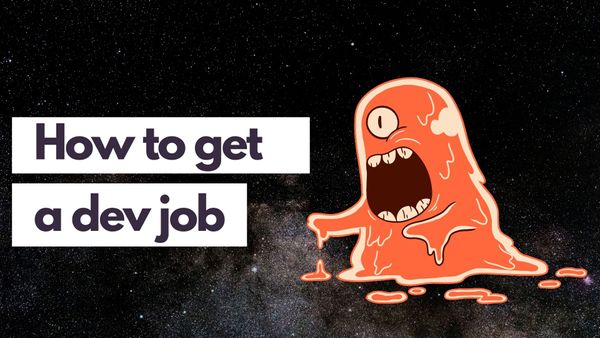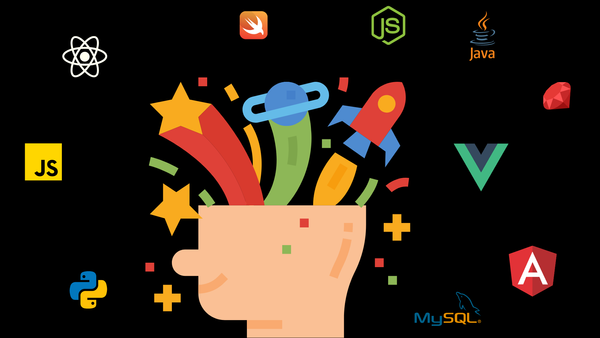So, you’ve got a day job. But you’re starting to feel drained from it. Or perhaps you just feel stuck in your code — unable to learn anything new or feel that spark that you once had.
You also need/want a bit of cash on the side for whatever reason — to escape your 9 to 5, to start investing in crypto, to run away into the world of remote work but don’t have the courage just yet because you want a sense of security.
Whatever your reasons, here are 7 money-making side projects you can do as a developer.
1. Shopify App/Themes
Shopify is a massive market. For many, it can feel saturated. But is it really? Let’s say you price your app at $25 subscription and you have 100 shops using it. That’s a solid $2.5k right in your pocket each month.
There are online shops opening left, right, and center. If you can come up with an idea that solves a particular pain point for shopkeepers, it can be easy money.
Marketing-wise, there’s a myriad of Facebook business owner groups out there. If you join one of them, you’ll start to see patterns for the same issues come up over and over again.
Sure, there’s probably an existing app or plugin that solves that problem. But business owners are not developers. They don’t Google things up like we do. Solve their problems. Get a few subscribers and you’re set!
2. WordPress Plugins/Themes
For non-developers, WordPress is still one of the main go-to for blogging. Theme development is one of those things that’s been around for so long that you might find it hard to compete and make any actual money.
Market places like ThemeForest can feel like they’re taking more than the hassle it takes to get a theme past their submission criteria.
However, I’ve seen a lot of clever marketing done for WordPress plugins and themes — and that involves giving away your work for free.
The thing is, there is a lot of shoddy stuff out on the free market. However, if you build something that is well designed and give it away for free — then you have a selling point edge.
In my early days, (and mostly out of pure laziness), I’ve bought premium upgrades to free themes. What I’ve also found is that the good ‘free’ themes and plugins with upgrades tend to also get free advertising on listicles articles. They usually come in the headline flavors of ‘Top Free WordPress Themes and Plugins’ kind.
Sell a few dozen or two at $29-$45 per month and you’re set for a good passive income stream.
3. A productivity tool
Productivity tools are the essence of getting things done. Make something, launch it on Product Hunt and see if it sticks.
Set it up with a free trial and then upgrade into a subscription model. It doesn’t have to be fancy. It just needs to solve a productivity problem that’s annoying enough to be worth paying for.
4. Ethical hacking
This one is more active side income than passive income. Personally, I haven’t ‘hacked’ anything yet. But over the past year, I’ve been doing a lot of security-related work and find that organizations are more vulnerable than we actually want to believe.
Word on the grapevine has it that you can make a pretty penny as an ethical hacker doing bug bounties on the side. It’s good for the resume and you might learn something in addition to your normal day job.
Here’s a guy talking about how he made a decent income as a bug bounty hunter.
5. Make something that matters to you
The thing about being a developer is that we solve problems. Surely, there’s something annoying in your life that you can solve for yourself.
It’s like one of those projects we get back in school — you know the kind that tells you to come up with an idea to solve some major world issue like poverty and hunger.
Except you’re taking it down a notch and just focusing on yourself.
If you find a tech-based solution, you can either open-source it and monetize through sponsorship. Or, you can sell it as a once-off or subscription model.
The possibilities are endless. You just need to stop, figure out what’s annoying in your digital life and solve it. Chances are, you’re not the only one experiencing it.
6. Gumroad projects
Digital assets can be traded as commodities. This includes graphics, icons, themes, and plugins.
Gumroad just saves you the hassle of starting up an online store to sell them. It’s free — unless you want lowered fees. Then there’s a small price for a subscription. Even then, the free account fees are still decent in general. In a way, Gumroad is like Etsy for tech people and artists. You’ll still need to do your own marketing to get the sales. By the end of it all, you’ll pick up a few new skills at the very least.
7. Externalize your knowledge
Yes. Yes. I did say that I’m not going to tell you to start a blog. The reality of blogging is that it is a grind. Ignore anyone that tells you that you’ll get rich writing a few articles online.
However, there are platforms out there like Udemy, Skillshare, and Teachable that can help you double-bank on your knowledge if you can commit to externalizing it.
If you’re not a talk-to-the-camera kind of person, write an eBook and sell it on Gumroad. The mere fact that you have an eBook makes you an instant expert — which can work in your favor when it comes to job switching.
Final thoughts
Whatever you end up doing, you just need to start and make sure you finish it. You might make some money. You might not.
The thing with side projects is that no matter what you do, as long as you finish it, you’ll be able to capitalize on it in some way. If it’s not through direct sales, then it’s the ability to use it in your resume for better pay upgrades and negotiations.
Side projects offer more than just extra money. It gives you the opportunity to explore and grow in avenues that may be outside your comfort zone. To make money, you might find yourself diving into the world of marketing, SEO, audience relationship, and whatever else is required to make that extra cash.







